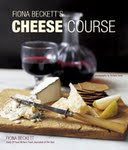 A recipe from my book An Appetite for Ale - an adaptation of a great idea from cookery writer and top London chef Mark Hix: pouring a Welsh rarebit over cooked leeks. (Pic by Vanessa Courtier)
A recipe from my book An Appetite for Ale - an adaptation of a great idea from cookery writer and top London chef Mark Hix: pouring a Welsh rarebit over cooked leeks. (Pic by Vanessa Courtier)Serves 2-3
6 even-sized leeks - about 500g in total
5 tbsp full-bodied English ale, such as Ridley’s Old Bob
150g strong cheddar cheese, grated
1 level tbsp plain flour sifted with 1/2 level tsp powdered English mustard
1 1/2 tbsp Worcestershire sauce
1 large egg yolk
3 tbsp double cream
Freshly ground black pepper
Trim the leeks removing any damaged outer leaves. Cut vertically half way down each leek, fan out the leaves and rinse under cold running water to remove any grit. Cut the leeks across in half and arrange in the basket of a steamer. Steam for about 4-5 minutes until just cooked. Pour the ale into a saucepan, add the cheese, sprinkle over the sifted flour and mustard and stir. Heat over a low heat until the cheese has melted and formed a smooth sauce. Take off the heat and beat in the egg yolk then add the Worcestershire sauce and cream. Season with plenty of freshly ground black pepper (you shouldn’t need salt). Heat the grill. Arrange the leeks in a baking dish and pour over the rarebit. Place the dish under the grill for about 2-3 minutes until brown and bubbling. Serve with crusty bread.








